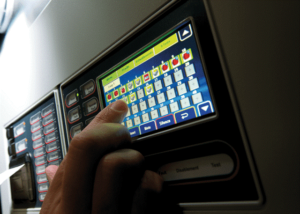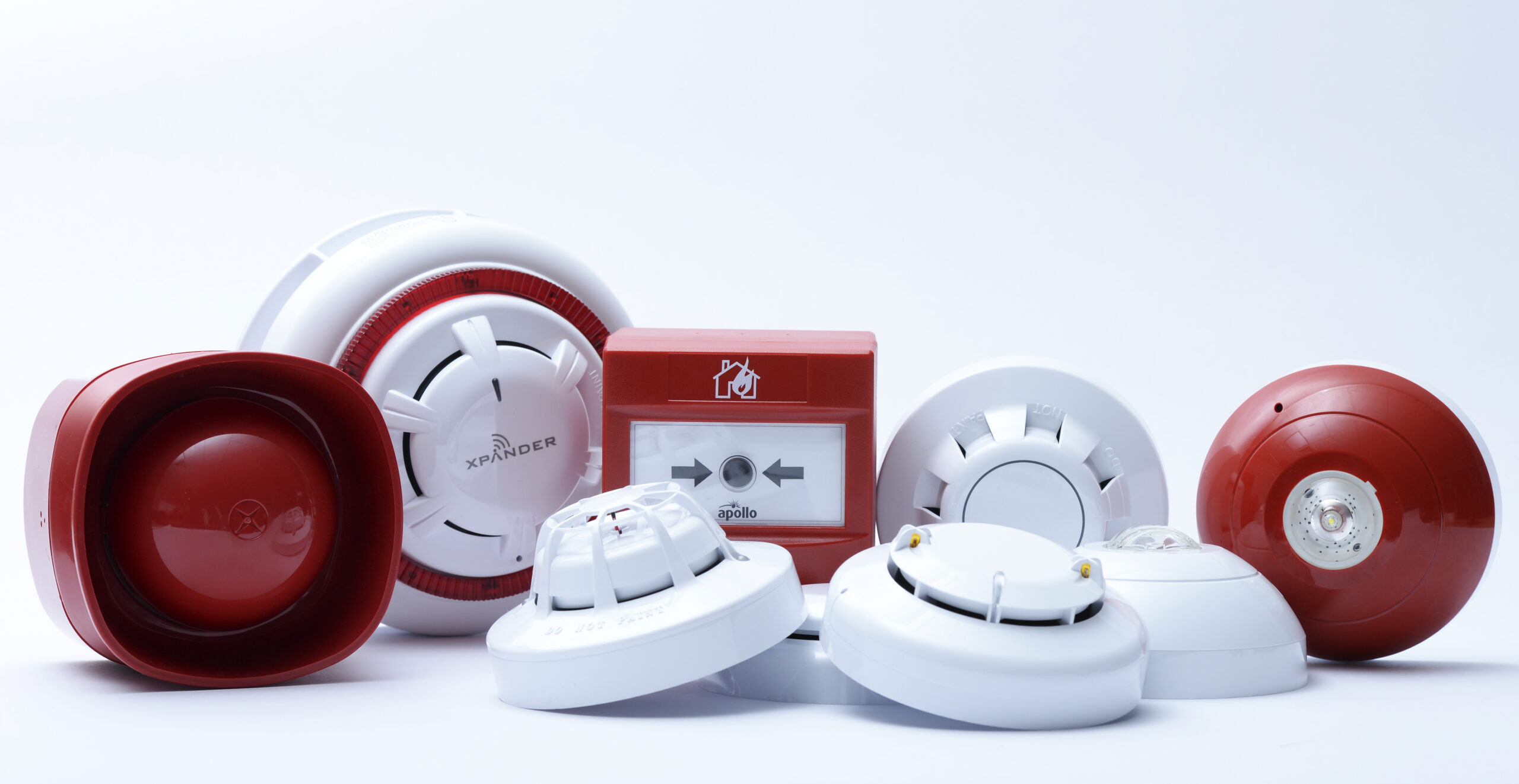Types Of Fire Alarm System Explained
Under the Regulatory Reform (Fire Safety) Order of 2005 it is normally a requirement to install a fire alarm system in most non-domestic premises such as offices, shops, hotels and public venues. This is normally dictated by the Fire Risk Assessment which should always be carried out by a competent and qualified person. They will decide the level of the requirement, which is represented by a letter and number, see below;
Category P Fire Alarm Systems – Property Protection
These types of systems are purely for the protection of property and fall into two classifications, P1 and P2. P1 protects the whole building, P2 is installed in defined parts of the building only.
The objective of a category P is to provide the earliest warning of a fire to minimise the time taken from ignition of a fire to detection and the subsequent attendance by the fire services, minimising loss to the property.
- Manual call point units are not essential
- There are no escape routes – only corridors
- Heat detectors may be acceptable (in certain circumstances)
Category L Fire Alarm Systems – Life Protection
Life protection systems can be divided into various categories, L1, L2, L3, L4, L5.
- L1 provides for Automatic Fire Detection (AFD) to be installed into all areas of a building.
- L2 provides Automatic Fire Detection (AFD) as defined in L3 as well as high risk or hazardous areas. Examples of this could be Kitchens, boiler rooms, sleeping risk, storerooms if not fire resistant or if smoke could affect escape routes.
- L3 Automatic Fire Detection (AFD) with smoke detection should be installed on escape routes with detection in rooms opening onto escape routes.
- L4 provides Automatic Fire Detection (AFD) within escape routes only.
- L5 is installed in building with a specific risk that has been identified. An example of this would be if there was an area of high risk that requires detection the category would be L5/M.
Category M Fire Alarm Systems
A BS5839 Category M Fire Alarm System is a manual operation only system which has call points on all exits as well as corridors where persons are not expected to walk any more than 45m to operate one.
- All categories of life protection will have a type M system installed
So for example a lot of educational establishments require a L2/M type system.
Types of System
Conventional/Non-Addressable Fire Alarm Systems
These are entry level systems suitable for small offices, nurseries, small hotels, restaurants, warehouses, shops and other small businesses. The building is wired/divided into different zones, with detectors and call points hardwired on dedicated circuits to the control panel (maximum of 20). Sounder circuits are wired separately to detection circuits. If a detector activates, the control panel identifies which circuit contains the triggered device and indicates the original location of the fire alarm.
Two-Wire Fire Alarm Systems
Two wire of B-wire fire alarm systems are similar to conventional systems as they also suit small businesses and provide zonal indication of an activation. A two-wire system allows sounders to be added onto the detection circuit saving the cost of wiring additional sounder circuits.
Analogue-Addressable Fire Alarm Systems
Addressable systems are wired in a loop, i.e. a cable running out from and back to the panel. This loop can have detection and signalling devices on the system. Being a more intelligent system, it is programmable and will provide point identification of an activation as opposed to zonal indication. These systems are required in certain circumstances for early warning for example a care home with more than 10 beds occupied overnight.
Wireless Fire Alarm Systems
Wireless fire alarm systems are ideal for premises where wiring is difficult, for example historical or heritage sites where cabling would be unsightly. They are expensive but have the advantage that no cables need wiring between the detection devices and the control panel and additional running costs will need to be factored in. A second advantage is that they are quicker to install which can be beneficial to sites where installation is time sensitive.




Mauris dapibus ante in ligula venenatis interdum. Nunc iaculis, ligula ac egestas lacinia, libero enim mollis lorem, eget euismod tortor metus vel lorem. Sed tristique facilisis malesuada. Sed feugiat, massa sed venenatis consectetur, erat magna facilisis libero, ac porttitor sapien dolor in libero.